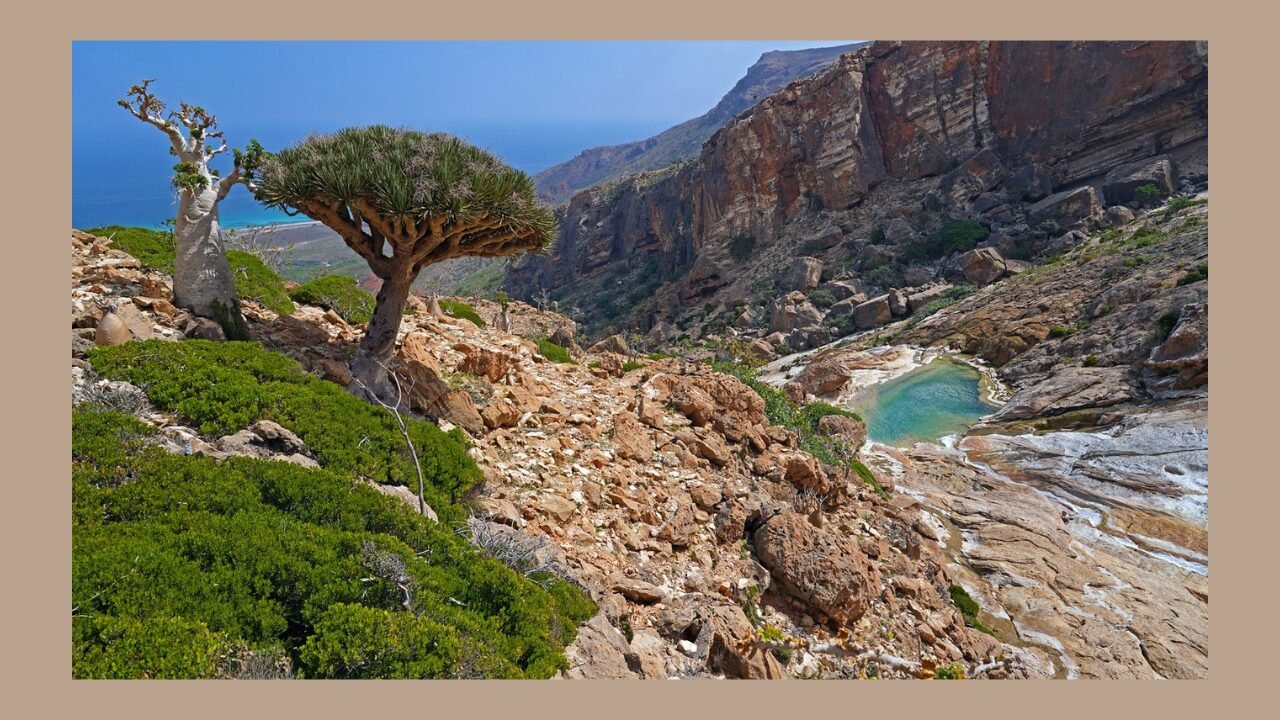Exploring the Untouched Wilderness of Socotra Island

Socotra Island, off Yemen’s coast in the Arabian Sea, is often called one of the most otherworldly places on Earth — and with good reason. Home to hundreds of endemic plant and animal species, dramatic limestone caves, and pristine white-sand beaches, this remote island is a sanctuary of biodiversity and natural beauty that has remained virtually untouched by time.
A Lost World of Natural Wonders
Often compared to the Galápagos Islands for its uniqueness, Socotra Island is a UNESCO World Heritage Site that boasts an extraordinary array of flora and fauna. More than one-third of its plant life is found nowhere else. The most iconic is the Dragon’s Blood Tree (Dracaena draco), which looks like a giant green mushroom and bleeds a red sap believed to have medicinal properties.
Equally fascinating are the bottle trees (Desert Rose), frankincense trees, and cucumber trees — all of which have remarkably adapted to the island’s arid and rugged climate. Wildlife lovers will be delighted to know that Socotra Island is also home to rare birds, reptiles, and insects, many of which are endemic to the region.
A Paradise for Eco-Adventurers
Socotra Island offers a raw and immersive experience for the true explorer, unlike typical tourist destinations. Hiking through its limestone plateaus, snorkeling in its coral-rich waters, or camping under the stars in the island’s many secluded valleys provides a deep connection with nature.
The Diksam Plateau is a must-see for trekkers, offering panoramic views, dragon’s blood forests, and fascinating interactions with local Bedouin shepherds. Hoq Cave stretches nearly 3 kilometers into the mountain, showcasing ancient stalactites, stalagmites, and pre-Islamic inscriptions, making it a cultural and historical treasure of Socotra.
Culture and Community
The people of Socotra Island, mainly of Yemeni origin, have lived in balance with nature for centuries. They speak the Soqotri language, an ancient Semitic tongue that is not written but passed down orally. Visiting Socotra is a journey into nature and a resilient culture shaped by isolation and respect for the land.
Despite its remoteness, the island’s communities are welcoming and generous. Guests often stay in eco-friendly camps or homestays, providing a unique opportunity to engage with local customs, food, and traditions.
Conservation and Responsible Travel
Due to its fragile ecosystem, Socotra Island has faced increasing environmental challenges. While tourism is slowly growing, conservation remains a priority. Efforts by global environmental organizations and local authorities aim to protect this biodiversity hotspot from overdevelopment and ecological harm.
Visitors are encouraged to travel responsibly by choosing certified local guides, minimizing waste, and respecting the island’s delicate habitats. The best time to explore Socotra Island is from October to April, when cooler weather and calmer seas make travel more pleasant.
READ MORE
Final Thoughts
Socotra Island is more than just a travel destination — it’s a living museum of evolution, isolation, and resilience. For those seeking something truly off the beaten path, exploring this untouched wilderness is a once-in-a-lifetime experience. Whether you’re a nature enthusiast, an adventurous soul, or someone looking to disconnect from modern life, Socotra Island welcomes you with open arms and ancient landscapes that feel out of this world.
